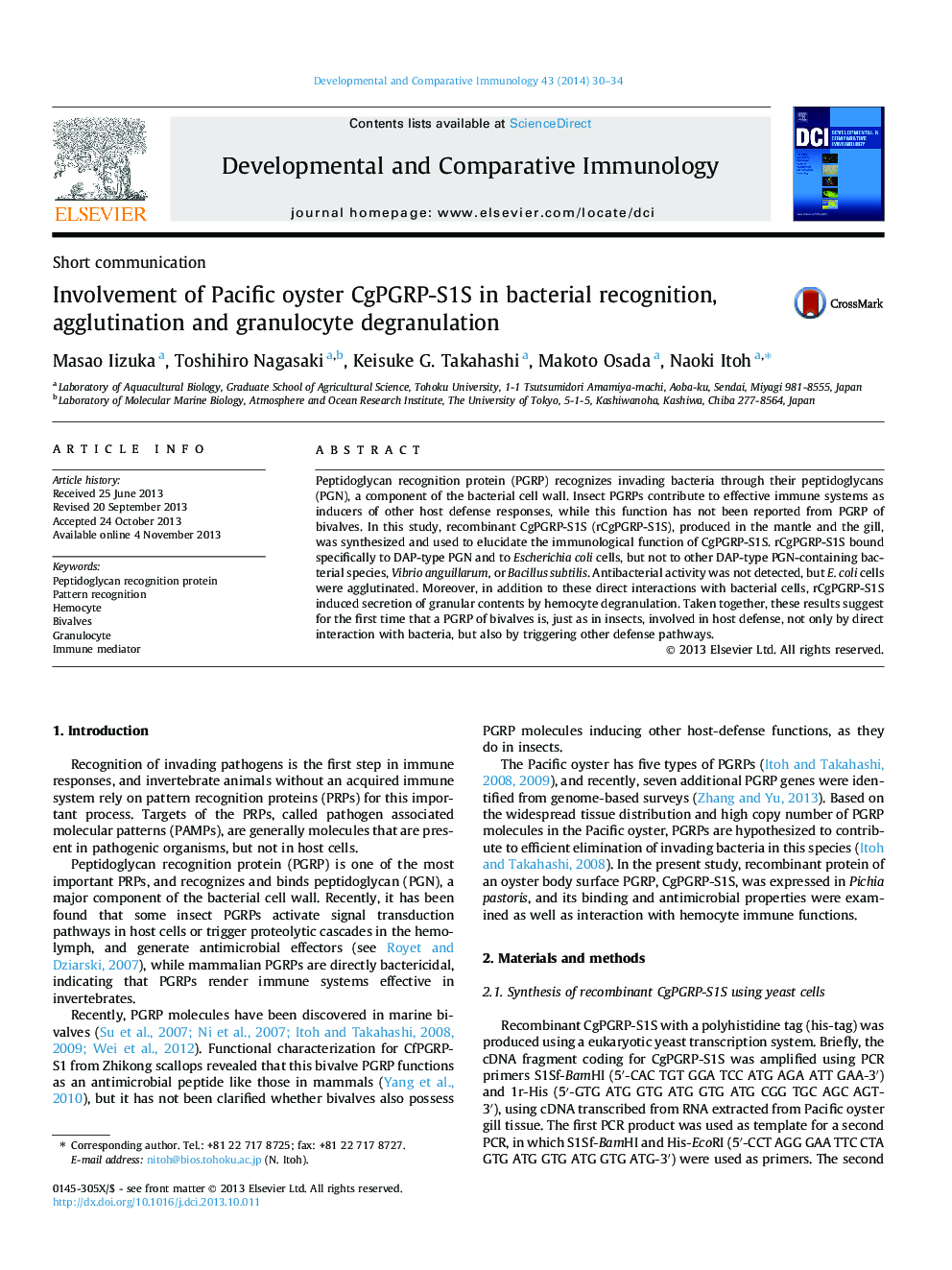| Article ID | Journal | Published Year | Pages | File Type |
|---|---|---|---|---|
| 10971442 | Developmental & Comparative Immunology | 2014 | 5 Pages |
Abstract
Peptidoglycan recognition protein (PGRP) recognizes invading bacteria through their peptidoglycans (PGN), a component of the bacterial cell wall. Insect PGRPs contribute to effective immune systems as inducers of other host defense responses, while this function has not been reported from PGRP of bivalves. In this study, recombinant CgPGRP-S1S (rCgPGRP-S1S), produced in the mantle and the gill, was synthesized and used to elucidate the immunological function of CgPGRP-S1S. rCgPGRP-S1S bound specifically to DAP-type PGN and to Escherichia coli cells, but not to other DAP-type PGN-containing bacterial species, Vibrio anguillarum, or Bacillus subtilis. Antibacterial activity was not detected, but E. coli cells were agglutinated. Moreover, in addition to these direct interactions with bacterial cells, rCgPGRP-S1S induced secretion of granular contents by hemocyte degranulation. Taken together, these results suggest for the first time that a PGRP of bivalves is, just as in insects, involved in host defense, not only by direct interaction with bacteria, but also by triggering other defense pathways.
Related Topics
Life Sciences
Biochemistry, Genetics and Molecular Biology
Developmental Biology
Authors
Masao Iizuka, Toshihiro Nagasaki, Keisuke G. Takahashi, Makoto Osada, Naoki Itoh,
